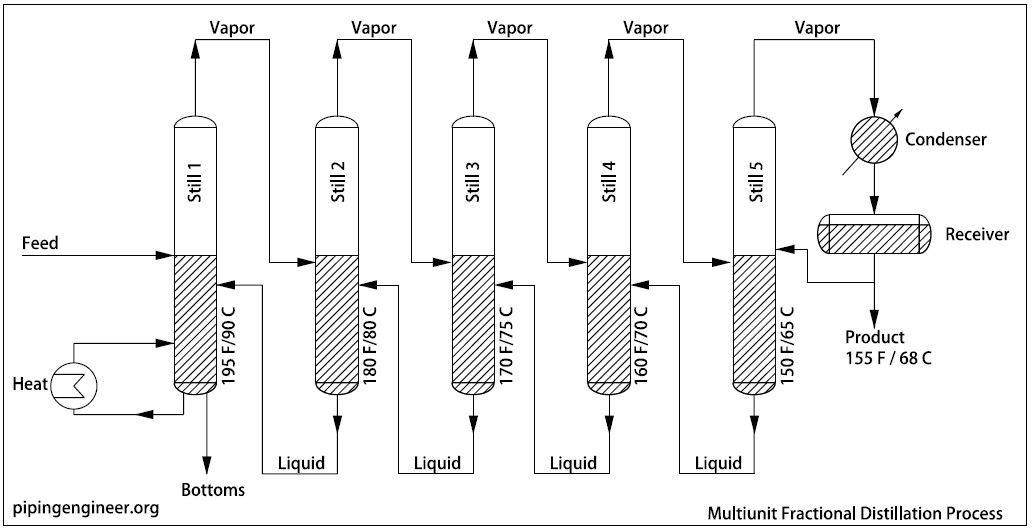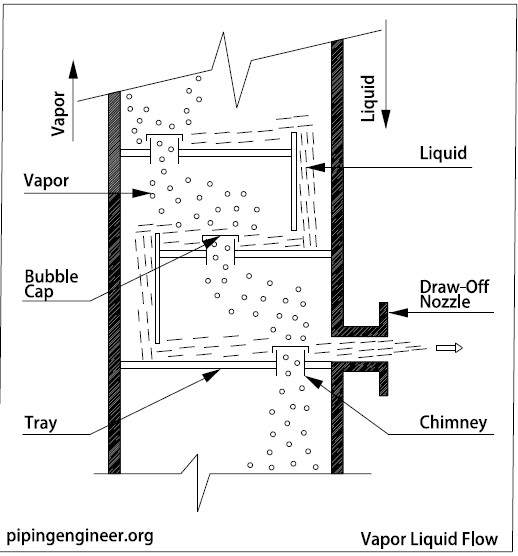Similar to continuous shell still, the fractional distillation process is made up of several stills linked together in series. The main difference is that all the liquid condensate is returned to the upstream still.
As the feed is partially vaporised in the first still, the vapors rise, travel through the overhead line, and come in contact with the liquid in the second still. Because the temperture of the liquid in second still is lower than the incoming vapors from the first still, the vapors partially condense.
At the same time, liquid from the second still enters the top of the first still. As vapors rise in the first still, they meet the incoming liquid from the second still. This causes vaporization of the incoming liquid from the second still and condensation of the rising vapors in the first still.
The same reaction takes place in all the downsteram stills. This process improves on previous operatons in terms of quantity, quality and a reduction in the energy needed to heat the raw materials.
Following figure illustrates the multiunit fractional distillation process.

Above multi unit fractional distillation process can be combined in one single component by stacking the stills on top of each other and installing an internal device between each still to allow the liquid to flow down and vapors to rise. This means that single unit can function in a way similar to the multi-shell unit for less capital and operational cost.
Following drawing shows a single fractionator tower with the corresponding still numbers and temperature ranges of the multishell unit.

The reflux return line controls the temperature of the fluids in the upper portions of the tower.
VAPOR AND LIQUID FLOW
One of the most common internal devices that allows the single tower to function similarly to the multishell unit is the tray, shown below.

Slots and holes in the tray allow the vapor to rise and the liquid to flow down. Rising vapors through the tower pass thru the slotted bubble caps and come into contact with the liquid flowing around the caps.
Liquid flowing down from trays above fall through downcomers and over and around the bubble caps en route to the next downcomer.
In this manner, the light boiling fractions in the down flowing liquid are vaporized by the heat from the rising vapors, and heavier boiling fractions in the vapor are condensed and flow down the tower.
This process of vaporizing and condensing throughout the tower allows the feed to be separated into the required boiling range fractions, which are drawn off from the side of the tower at the appropriate locations.
